Interstellar and the Inheritance of Gravity
The Beginning Is the End Is the Beginning.
“Do not go gentle into that good night,
Old age should burn and rave at close of day;
Rage, rage against the dying of the light.”
Every beacon promised survival
Every world demanded a debt
Interstellar isn’t about saving humanity. It’s about testing whether we deserve to survive. Each planet holds a false promise: Miller’s tide, Mann’s ice, Edmunds’ deferred warmth. Each beacon is less a rescue than a trial, judged not by mercy but by gravity, which never forgives.
Dust drifts through open windows, settling on shelves and skin alike. Wonder sinks beneath it, love and grief bending under survival’s weight. This is Interstellar’s first death: not a person, but the suffocation of awe.
Cooper once flew missions, charted skies. Now he wrangles harvesters through cornfields, chasing a rogue Indian Air Force drone not for flight but for scraps, its hum a ghost of his past. The truck cuts through green walls of corn, an illusion of ascent, forever earthbound
It begins on a skyless Earth and ends in a black hole’s echo. Between them lie the bodies, planetary and human, we abandon to pretend we’re moving.
The Moon
The Death of Wonder
The drone fight is quiet, almost gentle. Cooper grounds it, strips its panels, flight traded for irrigation.
Later, in Murph’s school, the other erasure is revealed. Not by a child, but by her teacher. At a conference meant to discuss discipline, policy speaks through a voice smoothed by training: Apollo was a hoax, a Cold War trick to bankrupt the Soviets. Cooper bristles, but the policy is already codified. Textbooks have been rewritten; history has been repurposed for compliance.
The frame doesn’t flare or recoil. It stays still, bureaucratic. Erasure enters not as spectacle, but as paperwork. Cooper’s anger feels almost uncinematic, a father raging at a void that will not argue back. Murph isn’t even in the room; history is revised without her, policy deciding what children will inherit in her place.
Textbooks aren’t neutral. They are crop reports for memory. In the film, Apollo becomes a hoax to free resources for the soil. In our moment, governments revise syllabi, ban novels, and recast slavery as “skills training.” The field changes, but the logic endures: curb wonder, reframe grief, rewrite survival as compliance.
What the drone was to flight, the moon becomes to wonder: stripped, rewritten for the soil, as if Daedalus himself were handed a plow.
The moon becomes the proof. Not in its presence, but in its absence, a bright, cold witness erased from the sky, reduced to rumor, and from Murph’s reach.
STP — MoonBeacon integrity: 0%Target: lunar achievementEmotional camouflage: completeVerification attempt: deniedVerdict: Signal removed from sky. Sky rewritten as syllabus.
Truth isn’t erased in fire. It rots in binders, waiting for children like Murph to inherit.
Earth
The Blight Beneath
Earth survives, but only in the narrow sense. The fields are endless, but they’re all the same, corn monoculture stretching to the horizon like a barcode.
Even the baseball games taste of corn, candy and soda reprocessed from the same stalks that choke the fields. A dust storm swallows the bleachers, the open-air pastime closing in like a room with no doors. The air hums with the low howl of that wind, a sound that settles into your ribs and stays there.
Stalks scrape in the wind like the hands of the system itself, brushing you back into line. The blight doesn’t just kill crops; it kills variety. Wheat, okra, all gone. The same food every day until even joy tastes like maintenance. This isn’t famine. It’s engineered scarcity.
In Murph’s school, history has already been rewritten; in the fields, the present is rehearsed the same way. Each harvest is survival, but also compliance. Cooper’s son is already spoken for, guidance tests steering him toward farming, not for lack of talent, but because the system needs hands in soil more than minds in sky. The same scarcity logic that narrows a boy’s horizon also narrows who is chosen to survive.
The Lazarus missions were not parables but expenditures, billions funneled into secret launches, crews selected in silence, labor absorbed into projects never revealed to the world they claimed to save. The film erases those systems: no funding apparatus, no workers, no global coalition. The planets are personified as ethical judges, but the real judgment belonged to institutions that gambled on a handful of lives while billions starved in dust.
The frame doesn’t exaggerate, it forecasts. Off-screen, the same scarcity logic holds. India’s ethanol expansion displaces edible oil crops, deepening import dependence. In the U.S., nearly half of all corn feeds ethanol plants, not people. The name is “sustainability.” The function is market capture.
Corn’s abundance hides the real loss: biodiversity, imagination, the permission to dream of more than the next planting season. Gravity still holds Cooper here, but not as anchor, a leash pulling his harvester across the rows that took the sky’s place.
The same system that narrows futures to cornfields also narrows survival to the chosen few. Scarcity is not just what you eat; it is who is allowed to endure.
STP — EarthBeacon integrity: distortedHistorical viability: revisedEmotional camouflage: policy-approvedVerification attempt: flaggedVerdict: Capital decides what grows, who eats, and who waits.
Miller’s Planet
Grief in Motion / The Sin of Naïve Urgency
From Earth’s leashed fields, Miller’s waves pull grief into motion, a tide where scarcity drowns whole futures. The Endurance drops into the shallow ocean, the atmosphere tugging at its hull like an unseen tether, each tremor stealing years. Gravity here presses harder, the planet’s pull thickens every move, a grief that weighs more than hope.
Seven years per hour. Lives gone in the space between heartbeats. Miller’s beacon still pulses, steady as breath, a silent tide whose echo is drowned by the score’s ticking clock. The truth: she likely died minutes after arrival, hours ago from her own view, years ago from theirs. She lands, turns on the beacon, never lives long enough to see the waves rise as walls that dwarf the Endurance.
Doyle doesn’t survive the wait. If Miller trusted too soon, Doyle resisted too late. His voice never pulses. The wave erases him mid-stride, claimed without malice.
This is the sin of scientific innocence. She trusted the mission too much, acted before confirmation. Her death became a broadcast frozen in first contact, never revised, never warning, a signal outliving the life that sent it, a broadcast without witness.
If Miller trusted too soon, Mann will weaponize trust with full understanding.
STP - MillerBeacon integrity: 74%Atmospheric viability: unstableTemporal distortion: criticalVerification attempt: irrelevantVerdict: Signal outlives the life that sent it. Broadcast without witness.
Mann’s Planet
The Stillness of Betrayal / The Sin of Calculated Deceit
If Miller’s waves kill in motion, Mann’s ice kills in stillness. The surface is frozen and cracked, an unbroken horizon of deception. Even the sky is frozen. The clouds lie. They hang in place like promises never meant to move, static, spectral, complicit.
This isn’t just one man’s cowardice. It’s a system’s blind spot, the mission built on faith in data, on the assumption that signals are truth and their senders are faithful. Mann exploits that premise the way the blight exploited Earth’s monocultures: not by attacking head-on, but by aligning so perfectly with expectation that no alarm sounds until it’s too late.
Where Miller trusted too soon, Mann refused truth on sight. Instead of broadcasting failure, he encoded it into a lifeline. Each pulse was another untruth, rescue before guilt.
And against him stands Romilly. Years alone in orbit, his solitude an act of faith stretched across absence. Mann could not survive even the solitude of his own landing without falsifying hope. One endured the void. The other weaponized it.
When Romilly finally digs for proof, KIPP lies gutted in the ice. The robot’s once-steady voice now glitches like a dying breath. Mann has wired the truth as a trap. The moment Romilly uncovers too much, the charge detonates, his signal cut mid-broadcast, decades of waiting erased.
Romilly had already endured decades in orbit, the quiet custodian of Endurance, keeping systems alive while others chased signals. His labor was survival in its most uncinematic form: maintenance, vigilance, waiting. The film gives him no myth for that endurance. When Mann’s charge ignites, his decades of care vanish as background debris. Survival by patience yields to survival by spectacle.
The planet mirrors Mann: frozen, deceptive, lonely. Terrain that looks stable until it fractures beneath you, ice horizons splitting as betrayal breaks open. Miller punished faith. Mann punishes proof. Only silence endures, a silence that will echo into Gargantua’s pull.
STP — MannBeacon integrity: 12%Atmospheric viability: falsifiedEmotional camouflage: activeVerification attempt: fatalVerdict: Signal mimics hope. Terrain mimics truth.
STP — Romilly
Beacon integrity: steady / erased
Temporal record: decades sustained
Emotional signal: endurance
Verdict: Vanished without myth.
Edmunds’ Planet
The Refusal of Reduction / The Sin of Narrowing
If Mann falsifies data to lure rescue, Brand wagers everything on love as signal. Her faith is not in readings but in relation, not in survival of one but in the widening of many. Where Earth narrowed life to corn rows, and Mann narrowed it to lies, she carries seeds that resist narrowing at all.
Her choice is Edmunds’ world. At the film’s end, we glimpse her rushing across its surface, atmosphere clear. But even here the frame withholds: no embrace, no proof of life within the outpost, only her urgency cutting across the horizon. The colony pods are unpacked, a promise of continuity, but deferred.
Her voice framed it before the mission left orbit: “Do not go gentle.” What she resists is not just death. It is reduction. On Earth, children inherit binders. On Mann’s planet, they inherit betrayal. On hers, they inherit embryos, a library written in DNA.
By this point her team is gone, Doyle drowned, Romilly killed, Mann destroyed by his own deceit. Circumstance leaves her alone. Yet the film lingers on that aloneness, makes it the final image of hope: one woman, one horizon, one planet’s future. Just as Old Brand dies with his equation locked inside him, and Murph cracks it only with Cooper’s help but never with a team, Amelia Brand becomes another solitary figure, a planet’s worth of life funneled through her hands.
What we never see is collaboration: no colleagues unpacking, no debates, no shared governance. Breakthroughs and survival alike are stripped of the many and given to the few. The camera frames endurance as inheritance, survival as lineage. The institutional scaffolding that launched her is already erased; all that remains is one body running across a horizon. Cooper never brings a crew or a structure. His final gesture is solitary too, narrowing hope into reunion or claim.
So if Edmunds’ world is framed as humanity’s future, it is already narrowed, collaboration erased before it begins.
STP — Edmunds
Beacon integrity: intact
Colony viability: ambiguous
Collective viability: absent
Verification attempt: pending
Verdict: Deferred, love as signal
Gargantua
The Gravity of Inheritance / The Mirror That Devours
If Miller’s ocean erased the moment, and Mann’s ice embalmed the lie, Gargantua holds them both, a pull so absolute that time itself bends to it. From orbit, it is a dark sun, ringed by a halo of burning matter, light torn into a smear by speed. Down here, seconds are currency, and gravity is the bank that never forgives its loans.
It spins near the speed of light, dragging the very fabric of space around with it, holding Miller’s tide like a knife balanced on its edge. The accretion disk blazes hotter than a star’s surface, feeding on what it cannot yet swallow. Every photon is bent, wrapped over its crown, so the top glows with the light of what lies behind, a crown of light bent from what is absent.
Cooper’s descent is not conquest but surrender. Inside, the tesseract unfolds, an impossible chamber of shelves and slats, each doorway opening into Murph’s room at a different moment. Here grief and love share a medium: gravity as language, time as terrain. What survives is not what you meant, but what you mourned, and even mourning is curated, trimmed, agenda wrapped in grief. Doyle vanished into Miller’s wave. Romilly was detonated into silence on Mann’s world. Their signals never reach this archive. Cooper’s does, but even here it is chosen, shaped by omission. Purity, if it exists here, is already tangled.
Gargantua does not judge. It reflects. And reflection, under gravity’s pull, is neither verdict nor absolution. It is archive without author, a chamber where signal remains but meaning slips.
The black hole doesn’t lie. It doesn’t speak at all.
STP — GargantuaBeacon integrity: unreadableTemporal frame: nonlinearEmotional signal: curatedVerification attempt: in progressVerdict: Unknowable. Archive without author.
Black Hole Sun
From the moon’s dust to Earth’s withering fields, from an ocean that erases to ice that lies, every world in Interstellar carries a different weight of grief. Some rush to signal before the surface can answer. Some falsify the surface until the signal becomes a trap. And some hold both truths at once, bending time until only gravity can deliver the message.
Cooper survives, but the cost is decades stolen from his daughter’s life. The mission succeeds, but the Earth it set out to save is gone. Humanity now spins inside a cylinder of metal and farmland in Saturn’s orbit, a miracle of engineering built by the same hands that once farmed the soil to death. The science worked. The species remains unproven.
On Cooper Station, land is wasted on a museum of one family’s farmhouse. Children play baseball under an artificial sun. Murph’s deathbed is surrounded only by her descendants, the frame showing no sign of broader humanity. It is less a society than a mausoleum: an entire habitat orbiting Saturn as a tomb for one family’s story. Species proven? Or just archived, orbiting like a keepsake no one knows how to use.
Cooper doesn’t wait to find out. He doesn’t take Murph’s family, or a crew, or any structure of survival. He steals a ship, narrowing the gesture once more to himself, and sets course for Edmunds’ world, where Brand walks alone among her seedlings. Maybe they will grow wild. Or maybe they’ll be archived too, packed into neat rows under another artificial sun. Hope and repetition blur. Survival becomes inheritance embalmed long enough to look like renewal.
STP — Cooper’s StationBeacon integrity: pendingEmotional viability: unknownAgenda trace: unreadable / but obviousVerification attempt: unresolvedVerdict: Awaiting gravity’s pull.
If this piece resonated, consider subscribing. Each essay is another signal sent out, and it matters who’s there to catch it.
Works Cited
Interstellar. Directed by Christopher Nolan, performances by Matthew McConaughey, Anne Hathaway, Jessica Chastain, and Michael Caine, Paramount Pictures / Warner Bros., 2014.
Nolan, Christopher, and Jonathan Nolan. Interstellar: The Complete Screenplay with Selected Storyboards. Insight Editions, 2014.
StarTalk: The Science of Interstellar with Kip Thorne. Hosted by Neil deGrasse Tyson, uploaded by StarTalk, 14 Nov. 2014, -YouTube
“The Weird Physics Surrounding Black Holes That Will Make You Question Your Existence.” Uploaded by Astrum Extra, 27 Oct. 2023, -YouTube
Acknowledgments
I’ve feared the sky since I was a child, not its darkness, but its size. Interstellar sharpened that fear, turning it into awe, then into grief. Hans Zimmer’s score was more than background while writing this; it was the gravity that carried the words.
Special thanks to Christopher Nolan, the cast, and the crew of Interstellar for creating a film that fuses spectacle with emotional and scientific inquiry.
Gratitude to Kip Thorne for grounding the film’s theoretical architecture in real astrophysics, and to the teams at StarTalk and Astrum Extra for their commitment to public science communication.
The “Earth” section of this essay draws thematic influence from contemporary and historical agricultural policy, including the global shift toward biofuel-centered crop production. These parallels are interpretive and not directly cited in the film.
And to you, the reader, thank you for walking this orbit with me, for holding these signals long enough to see what survived.
Disclaimer
This essay is an independent work of cultural criticism and commentary.
All images, quotes, and concepts from Interstellar (2014) are the property of their respective copyright holders and are used here under fair use for the purposes of critique, education, and analysis.
External scientific references are based on publicly available materials and are not intended as instruction in astrophysics or cosmology.
No affiliation with the creators, studios, or distributors of Interstellar is claimed or implied.




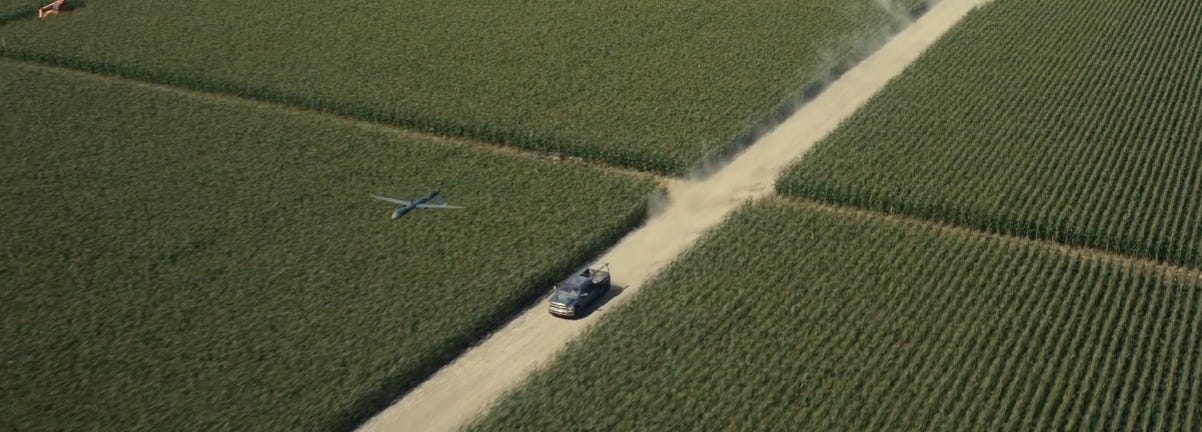

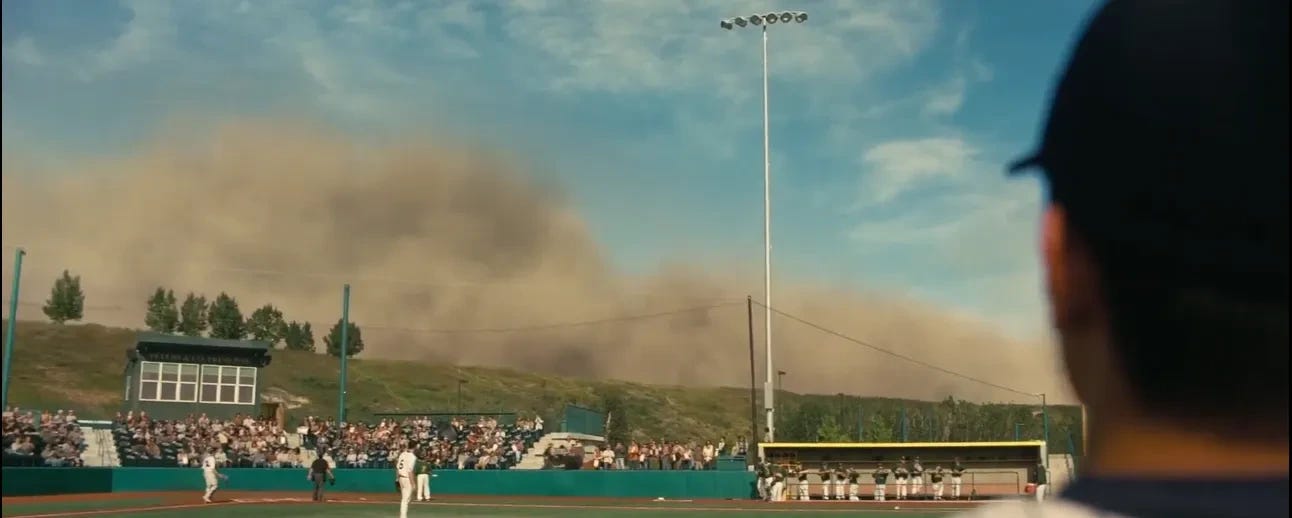
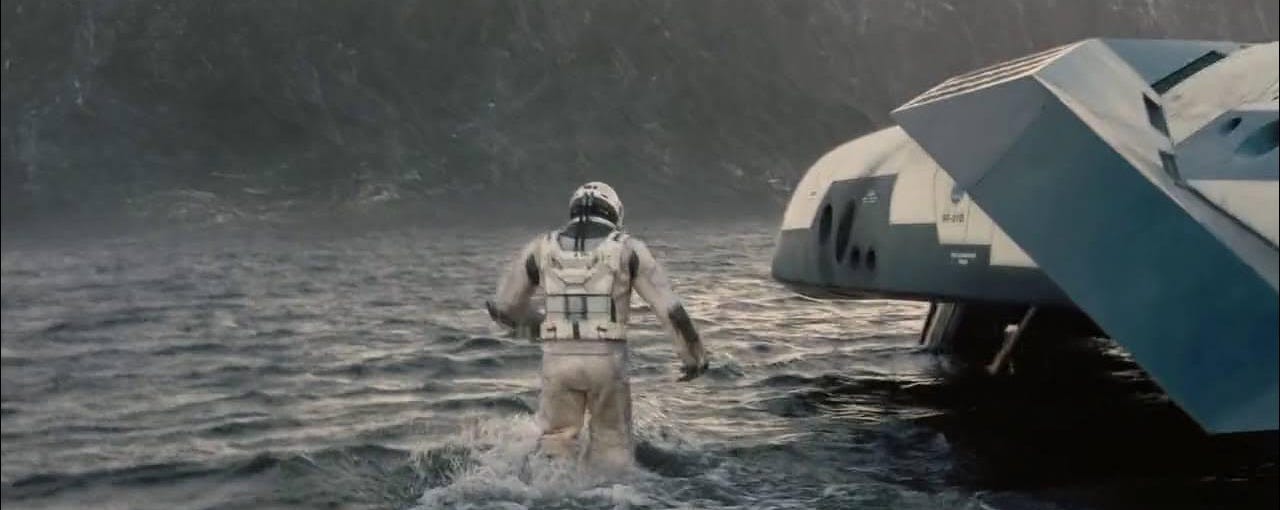
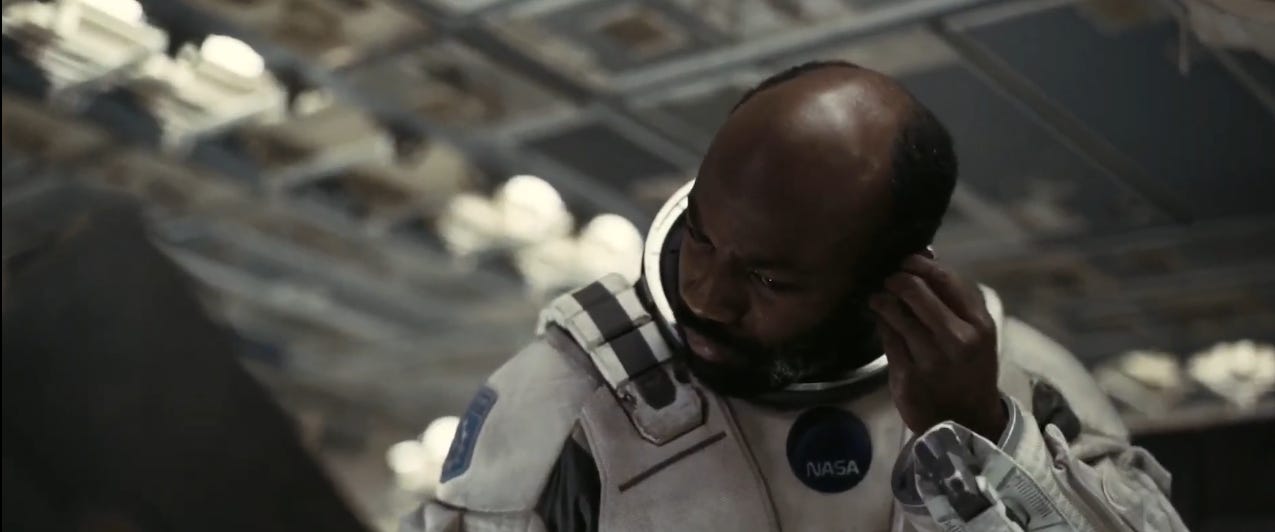
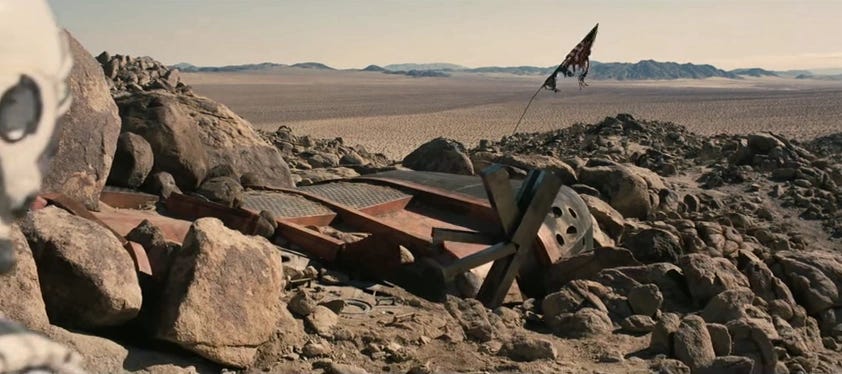

Really appreciate all the work you put into dissecting this film. One of my favorites but I haven't had the courage to watch it again. It's so heavy and such an experience. Maybe soon.
You are one of the most brilliant analytical minds I’ve seen on this platform. All of your pieces are so rich, thoughtful, and well articulated and this one is no exception. Thank you for sharing your gifts.✨